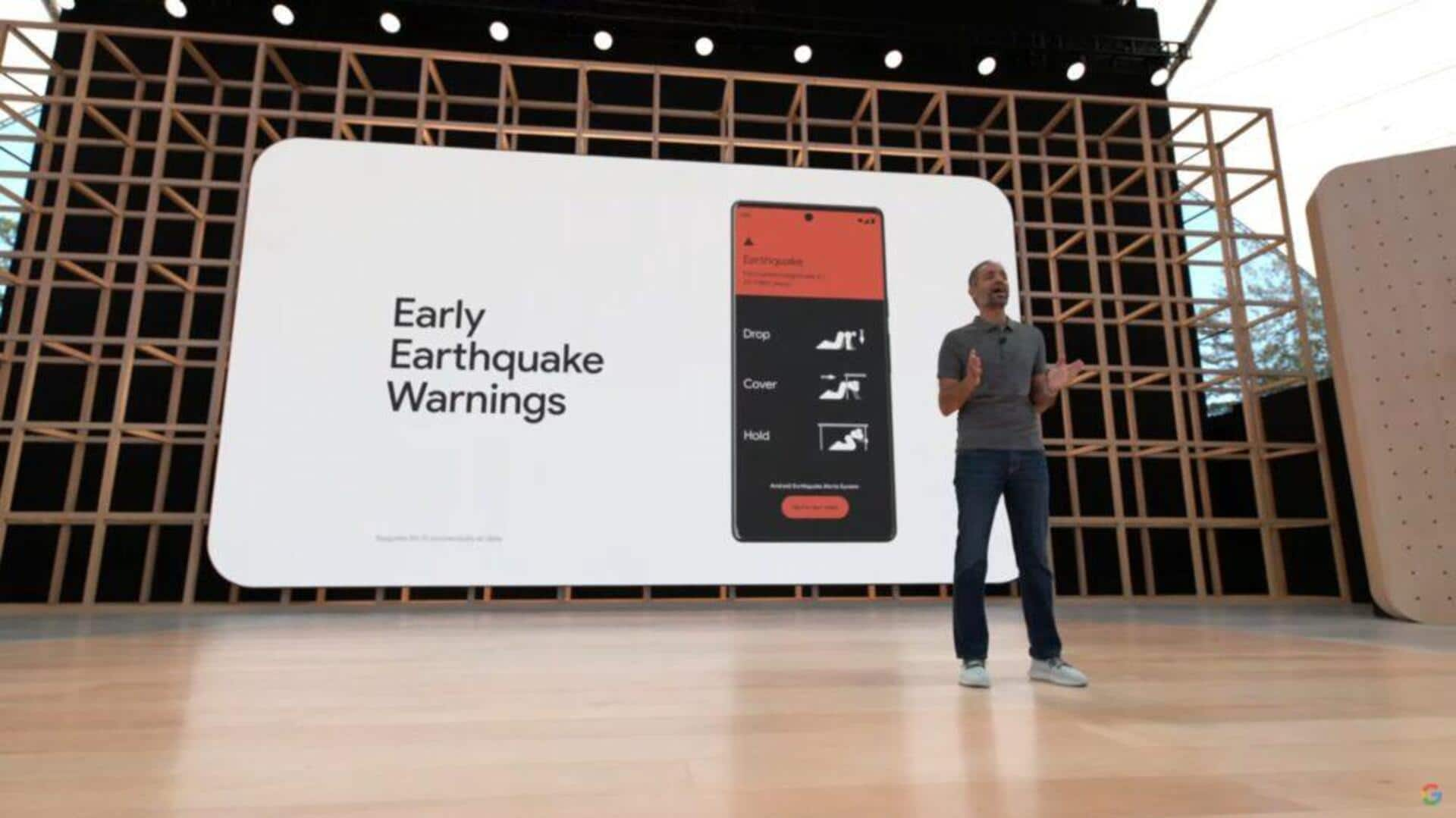
Your Android phone can detect earthquakes, warn in real-time—here's how
What's the story
Google's Android Earthquake Alert (AEA) system, which leverages the sensors of billions of smartphones around the world, can warn people before an earthquake strikes. The feature was introduced in India in 2023, but has been available since 2020 for users in seismically active regions. It is said to be more accurate and cost-effective than traditional earthquake early warning systems as it doesn't need a dedicated seismic station.
Global impact
AEA system is active in 98 countries
The AEA system is active on Android devices in 98 countries, covering over 2.5 billion people in just three years. The system works by collecting data from millions of Android devices, making it a highly effective tool for earthquake detection. A recent study published in the journal Science found that Google's AEA system is as effective as traditional seismic networks at detecting earthquakes and issuing alerts.
Performance comparison
Study highlights system's effectiveness
The study noted, "AEA demonstrates that globally distributed smartphones can be used to detect earthquakes and issue warnings at scale with effectiveness comparable to established national systems." It also highlighted that while smartphone accelerometers are less sensitive than those in the seismic networks, they can still pick up ground motions.
User feedback
What users think
The effectiveness of Google's AEA system can be seen in user feedback. 85% of users who got earthquake alerts also reported sharing them. Out of these, 36% said they received an alert before the earthquake, while others experienced it during (28%) and after (23%) the shaking began. This shows how effective Google's AEA system is at providing timely warnings about impending earthquakes.
Operational details
How does it work
Google's AEA system uses smartphone accelerometer sensors to detect vibrations, which could indicate an earthquake. If the system detects potential seismic activity, it sends a signal to Google's earthquake detection server with an approximate location of where the shaking was detected. The server then combines data from different smartphones in the area to confirm if an earthquake is actually happening.
Network scale
World's largest earthquake detection network
With over two billion devices worldwide acting as mini-earthquake detectors, Google claims its AEA system is the world's largest earthquake detection network. This innovative use of smartphone technology for seismic monitoring is a major step forward in disaster preparedness and response. It highlights how modern technology can be harnessed to improve public safety in the face of natural disasters like earthquakes.